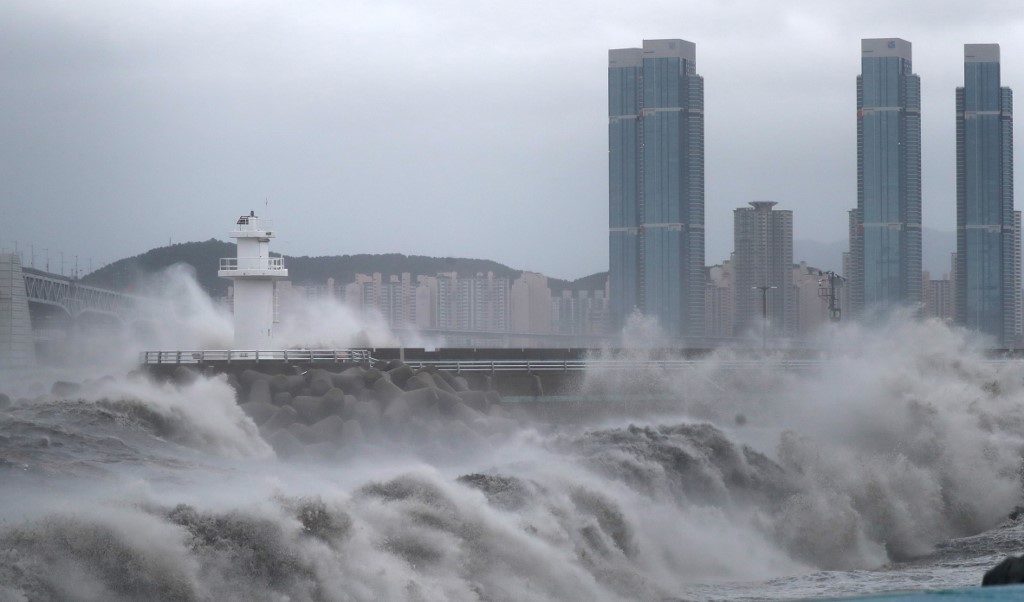Typhoon Haishen heads to South Korea after slamming Japan

High waves batter the coastline as Typhoon Haishen approaches in the southeastern port city of Busan on September 7, 2020. (Photo by – / YONHAP / AFP)
KAGOSHIMA, Japan — Powerful Typhoon Haishen approached South Korea on Monday after slamming southern Japan with record winds and heavy rains that prompted evacuation warnings for millions.
On Monday morning, initial assessments suggested the storm had done less damage than feared, though hundreds of thousands of homes were left without power across much of Japan’s southern Kyushu island.
At 7 am, the typhoon was 30 kilometers north of Tsushima island and was categorized as a “large” and strong” storm, having weakened overnight, but was still packing gusts up to 216 kilometers per hour.
Several dozen mostly minor injuries were reported, according to national broadcaster NHK, most of them elderly people who suffered falls.
In Nagasaki’s Goto, four people were hurt after a shattered window flung glass into an evacuation center in the early hours of Monday morning, a local fire department official told AFP.
Article continues after this advertisement“It was unclear if the window was smashed in by a gust of wind or something that blew into it,” he said.
Article continues after this advertisementWeather officials had warned the storm’s strongest gusts would be strong enough to overturn cars and snap powerline poles.
By Monday morning, around 476,000 households were without electricity, according to Kyushu Electric Power, raising fears of heatstroke for those left without air conditioning.
Authorities issued non-compulsory evacuation orders and lower-level advisories for more than seven million people at the peak of the storm.
But they also asked residents to avoid crowding at shelters to reduce the risk of coronavirus infections.
Hotels fully booked
Some shelters were forced to turn people away to have enough space to maintain social distancing, and many of those advised to evacuate decided to check into hotels.
Hotel Polaris in Shibushi city, Kagoshima, said all 73 of its rooms were booked out for the weekend — the first time it had been fully booked during a typhoon.
“This is a large building for our area. I think our guests have chosen to stay with us to feel safe,” front desk employee Takayuki Shinmura told AFP.
The typhoon played havoc with transportation, grounding hundreds of flights and disrupting train services.
But with little sign of significant damage early Monday morning, travel was expected to resume quickly.
Japan’s typhoon season usually runs until October and Haishen is the second powerful storm to move through the region in recent weeks.
It follows Typhoon Maysak, which also hit Japan before moving into South and North Korea, where heavy damage was reported.
Kim Jong Un appeared in state media over the weekend to inspect the damage and ordered 12,000 elite members of his ruling party to help with recovery efforts.
Rough weather caused by Maysak also sank a cargo ship carrying 43 crew and 6,000 cows off Japan’s west coast, prompting a desperate rescue effort by the country’s coast guard.
Two survivors and the body of a third crew member were found before Haishen’s arrival forced the coast guard to suspend the search.
“We are assessing the situation including exactly when we can resume the operation,” a coast guard duty officer told AFP on Monday.